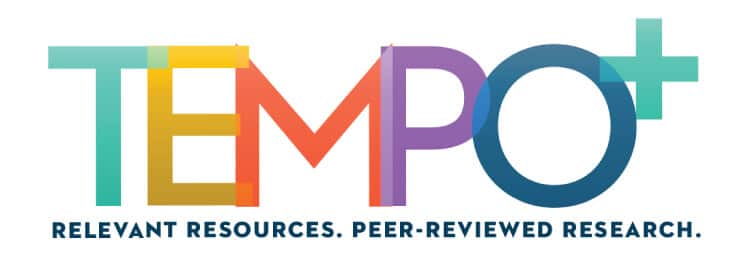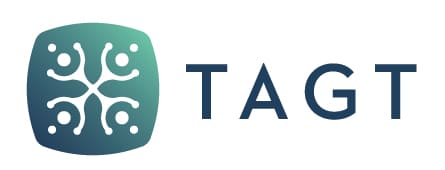One way to meet the needs of gifted, high-achieving students, and/or high-ability students in the general elementary classroom is cluster grouping. Cluster grouping is a widely recommended practice for gifted students that has gained popularity, in part because “When viewed in the larger context of school reform and extending gifted education services to more students, cluster grouping can reach and benefit teachers and students beyond those in traditional gifted programs” (Gentry, Paul, McIntosh, Fugate, & Jen, 2014, p. 4).
What is cluster grouping? “Cluster grouping is generally defined as placing a group of gifted, high-achieving, or high-ability students in an elementary classroom with other students” (Gentry et al., 2014, p. 4). Experts in gifted education suggest placing a specific number of children with high ability together, with the remainder of the class being heterogeneous. However, this approach is arbitrary, short sighted, and concerned only with serving students identified as high ability. Many educators perceive the purpose of cluster grouping to serve identified high-ability learners, and thus, they ignore composition of other classrooms as well as the methods and materials used in these classrooms (Gentry et al., 2014). However, cluster grouping “affects all students and teachers in the school. Therefore, cluster grouping should not only be viewed as a program for gifted students, but also as a total school program” (p. 5).
Total School Cluster Grouping (TSCG) is a model that may be used to discover and develop talents beginning in elementary school. Consider a program developed to meet the needs of students with gifts and talents implemented schoolwide and focused on the performance of all students and the composition of all teachers’ classrooms. Imagine an elementary school with a program that, over time, results in more students achieving at higher levels, fewer students achieving at lower levels, and in which the achievement of all students improves over time. Picture students from traditionally underserved populations who become high achieving or who leave behind low achievement, including students from low-income families; students from Black, Latinx, or Native American racial groups; students who are learning to speak English; or students who have disabilities. Finally, envision all teachers using strategies from gifted education with their students—focusing on students’ strengths, interests, and talents, involving them in enriched learning experiences often reserved only for students identified as gifted. A growing body of research supports the use of Total School Cluster Grouping (Gentry et al., 2014) in elementary schools for the benefit of all students and their teachers, including a current research study conducted by the Gifted Education Resource Institute (GERI).
GERI is an innovative, multidimensional center dedicated to the discovery, study, and development of human potential. Founded in 1974 by John Feldhusen and currently directed by Marcia Gentry, GERI is situated in the College of Education at Purdue University in West Lafayette, IN. GERI’s mission is the holistic development of giftedness, creativity, and talent among individuals throughout their lifespans. This is accomplished through enrichment programs for gifted, creative, and talented (GCT) youth; graduate programs for future scholars and leaders; professional development and coursework for educators; and cutting-edge research in psychology and education related to giftedness, creativity, and talent development. GERI is national and international in scope, housing one of the top graduate programs in the field of gifted education. Internationally, partnerships exist for research and student programming with schools in eight countries. Nationally, these partnerships also exist across the United States in 20 states and with five Native American communities (including the Diné, Lakota, and Ojibwe). Research and student programs are funded by federal grants, foundation grants, corporate support, private donations, and through nonprofit, cost-recovery programs. One of GERI’s priorities is providing support to high-potential students from low-income families; presently, approximately one third of student participants receive scholarships to attend GERI youth programs.
Consistent with GERI’s goals of equity, discovering and developing talents, and providing access to underserved youth in gifted programs, it is involved in a 5-year federally funded study on how TSCG (Gentry & Owen, 1999) affects identification equity, achievement gaps, and teacher practices concerning youth who come from families eligible for federal meal subsidies and students from ethnic groups who have been underrepresented in the field for decades, namely, Black, Latinx, and Native American youth. This study is entering its fifth year, and initial findings show increases in proportionality of students identified as high achieving from these groups. Further, teachers report integrating gifted education practices with all students in their clustered classrooms, a hallmark of the TSCG model.
TSCG is a specific form of cluster grouping that has a research base, theoretical rationale, and model for successful implementation in schools. TSCG is guided by the following four goals:
- Provide full-time services to high-achieving elementary students.
- Help all students improve their academic achievement and educational self-efficacy.
- Help teachers more effectively and efficiently meet the diverse needs of all their students.
- Weave gifted education and talent development “know-how” into the fabric of all educational practices in the school.
This model considers the placement and performance of every student in the school together with the students who might traditionally be identified as gifted, and students are placed in the clusters within the classroom to minimize the number of instructional levels. In TSCG, the achievement levels of all elementary students (gifted/high-, above-average-, average-, low-average-, or low-achieving) in the school are identified for the purposes of classroom placement and curricular modification. TSCG involves the following specific conditions.
- Identification occurs yearly on the basis of student performance, with the expectation that student achievement will increase as students grow, develop, and respond to appropriately differentiated curriculum.
- Identification encompasses the range of low-achieving to high-achieving students, with all student achievement levels identified.
- The classroom(s) that contain clusters of high achievers contain no above-average achieving students, as these students are clustered into the other classrooms.
- Some classrooms may contain clusters of special needs students with assistance provided to the classroom teacher.
- Teachers may flexibly group between classes or among grade levels as well as use a variety of flexible grouping strategies within their classrooms.
- All teachers receive professional development in gifted education strategies and have the opportunity for more advanced education in gifted education and talent development through advanced workshops, conferences, and coursework.
- The teacher whose class has the high achieving cluster is selected by his or her colleagues and provides differentiated instruction and curriculum to these students as needed to meet their educational needs. (Gentry et al., 2014, p. 9)
Notice that in TSCG there is no distinction made between identification as high achieving or as gifted. This is deliberate, because in this model we believe that achievement reveals the manifestation of ability. Some educators/scholars choose to differentiate between students who are “only high achieving” and those who are “truly gifted,” however, students who achieve at a high level have the ability to do so, plain and simple. So, it is condescending and dismissive to suggest that they are simply working hard and not truly gifted. There is no such thing as overachievement—or working beyond one’s capabilities. The goal of TSCG is to develop the academic and social lives of elementary students and to reverse longstanding underrepresentation within the field, which results from a variety of factors, including using instruments and teacher nominations that do not equitably identify students from poverty; students who are Black, Latinx, and Native Americans; and students who are English language learners. Additionally, within TSCG, students who score high on measures of aptitude or achievement but who do not exhibit high achievement are placed in the highest category on the basis of these high test scores, with the note that they need help to reach their potentials. Thus, there is a safety net for underachievers, who, unlike overachievers, do exist.
By providing every teacher with training, materials, and skills for talent development the goal is to turn the focus of each teacher’s classroom to that of strength-based, student-centered talent development. Reducing the range of achievement levels in each teacher’s classroom makes it more likely that the teacher will have the time and energy to work more closely with individual students. Making sure that each classroom contains students who achieve at average and above levels ensures that there are no classes that are perceived as “low” in ability or achievement. Yearly identification of all levels of student achievement helps identify individual student growth as they respond to appropriately differentiated curriculum, instruction, and interventions. The longer students are in school, the better they should achieve and the more they should learn. TSCG helps teachers and students uncover strengths, interests, and talents of all students while providing structure and means for meeting the needs of the most advanced students in the high-achieving cluster classroom. Each year, more students move into higher achievement and fewer students are identified at low achievement levels. Our research shows that achievement follows this trend, making this model a win-win for all students.
Thus, Total School Cluster Grouping provides an organizational model that places students into classrooms on the basis of achievement, flexibly groups and regroups students as needed for instruction (based on interests and needs), and provides appropriately challenging learning experiences for all students. TSCG offers districts a method of placing students in classrooms in a manner that can help teachers better meet academic needs and help all students achieve at higher levels.
References
Gentry, M. (With K. Ayers Paul, J. McIntosh, C. M. Fugate, & E. Jen). (2014). Total School Cluster Grouping and differentiation: A comprehensive, research-based plan for raising student achievement and improving teacher practices (2nd ed.). Waco, TX: Prufrock Press.
Gentry, M., & Owen, S. V. (1999). An investigation of total school flexible cluster grouping on identification, achievement, and classroom practices. Gifted Child Quarterly, 43, 224–243.
Marcia Gentry, Ph.D., Professor of Educational Studies, directs the Gifted Education Resource Institute at Purdue University. She received her Ph.D. from the University of Connecticut. She has received multiple grants worth several million dollars in support of her work with programming practices and underrepresented populations in gifted education. Dr. Gentry’s research interests include student attitudes toward school and the connection of these attitudes toward learning and motivation; the use of cluster grouping and differentiation to meet the needs of students with gifts and talents while helping all students achieve at high levels; the use of nontraditional settings for talent development; and the development and recognition of talent among underserved populations including students with diverse cultural backgrounds including Native American youth and children who live in poverty. She actively participates in NAGC and AERA; frequently contributes to the gifted education literature, and regularly serves as a speaker and consultant. She has collaborative projects across the country and around the world. She spent 12 years as a teacher and administrator in K–12 settings. She enjoys running/working out; spending time with friends and with her daughter who attends Purdue; gardening and hanging out in the horse barn; collecting contemporary Navajo weavings; spending time at her a cabin on Lake Superior; and working with her doctoral students. Marcia was the 2014 recipient of the prestigious National Association for Gifted Children’s Distinguished Scholar Award—and at this same meeting one of her graduates received the Early Scholar Award and one of her doctoral students received the Doctoral Student Award!






